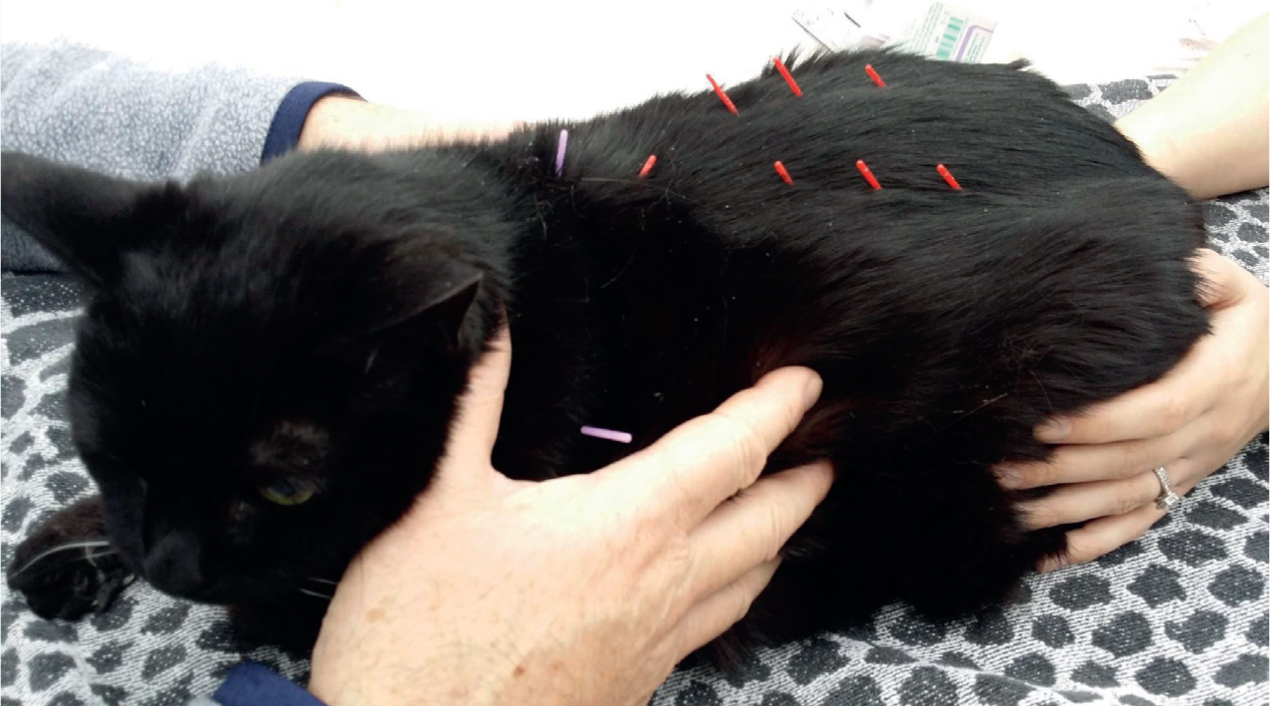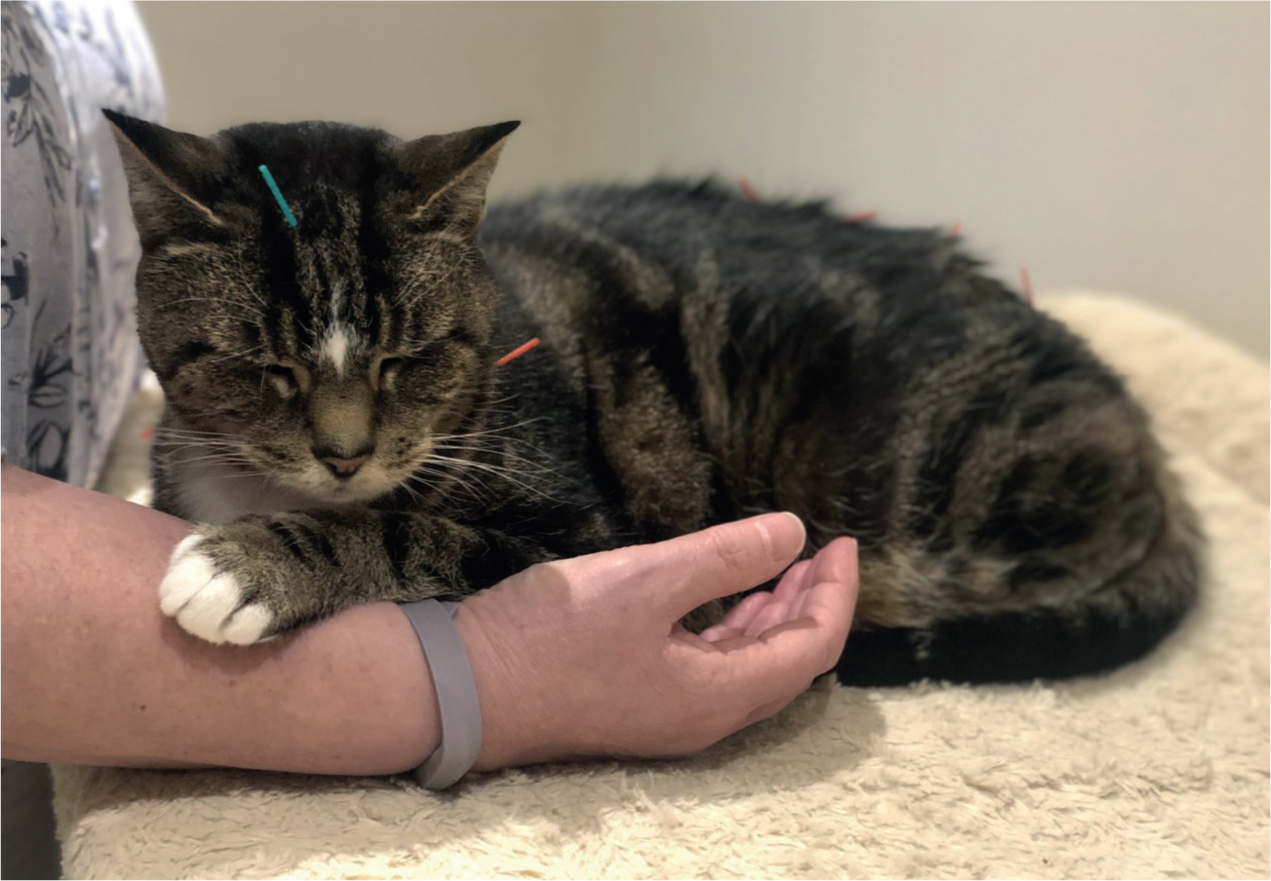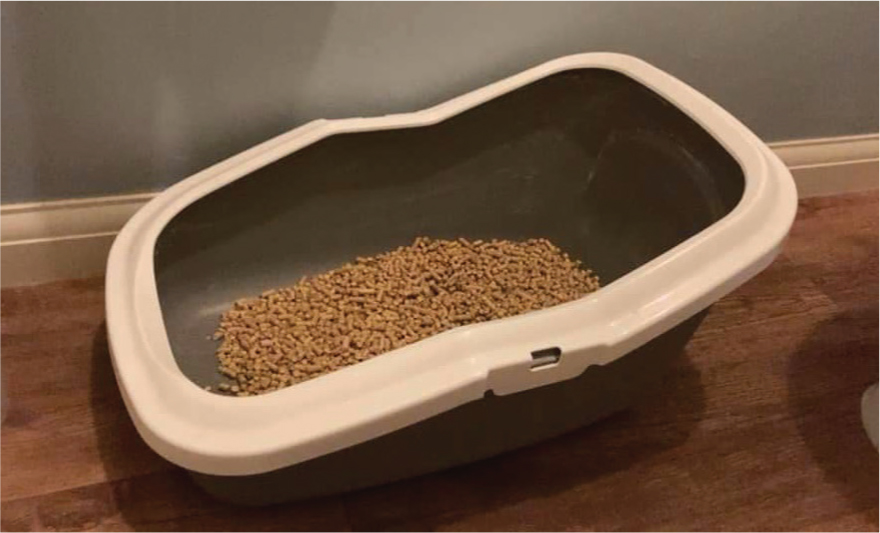Osteoarthritis (OA) is a progressive and multi-factorial degenerative joint disease (Enomoto et al, 2019; Ley et al, 2021). The disease affects multiple structures within the joint leading to destruction of the articular cartilage layer, changes within the subchondral bone, osteophyte formation and inflammation of the synovial membrane (Ley et al, 2021).
Aetiology
The aetiology of feline OA is different to that of canine OA. There is much less evidence to support OA secondary to developmental disease processes such as dysplasia, with one particular study citing this to be just 13% (Godfrey, 2005). Another study indicated that around 25% of cases of feline OA can be attributed to trauma (Clarke et al, 2005). The remaining cases may be idiopathic, primary, immunemediated, bacterial or have a genetic component, such as osteochondrodysplasia affecting the Scottish Fold (Lascelles, 2010). The most common joints affected in the feline patient are the hip, stifle, hock and elbow (Lascelles, 2010).
Clinical signs
Unlike dogs affected by OA, where lameness is a common clinical sign, changes caused as a result of OA in cats are often behavioural (Slingerland et al, 2011). As these behavioural adaptations can be subtle, detection by owners may be difficult. This likely contributes to its relatively poor diagnosis in clinical practice — despite being prevalent among the domestic cat population (Guillot et al, 2013).
Prevalence
The prevalence of OA among the domestic cat population is estimated to be around 40% of all cats (Hardie et al, 2002), and around 90% of cats over the age of 12 (Enomoto et al, 2019). As well as behavioural changes in the home environment, the disease can cause a variety of changes on clinical examination. Both possible behavioural changes and notable examination findings are listed in Table 1.
Table 1. Behavioural, examination and radiographic changes (which may be seen as a result of osteoarthritis in the feline)
| Behavioural changes (Bennett and Morton, 2009) | Examination findings | Radiographic changes (Lascelles et al, 2012) |
| Impaired mobility (including lameness/stiffness) | Pain on examination of the joints (Lascelles et al, 2012) | Presence of osteophytes |
| Difficulty jumping | Crepitus (Lascelles et al, 2012) | Periarticular or juxta-articular enthesiophytes |
| A change in sleeping habits | Joint effusion (Lascelles et al, 2012) | Narrowing of intervertebral disc spaces |
| Inactivity including reduced play or hunting behaviours | Joint thickening (Lascelles et al, 2012) | Periarticular or intra-articular soft tissue mineralisation |
| Reduced grooming behaviours and poor coat condition (Figure 1) | Reduced joint range of motion | Subchondral sclerosis |
| Altered demeanour | Muscle atrophy of the affected limb | |
| Signs of aggression | Painful compensations such as back pain | |
| A change in urination/defecation behaviours | ||
| A change in appetite | ||
| Unkempt claws due to lack of scratching behaviours |

Diagnosis
Diagnosis of OA is often confirmed radiographically. It is interesting to note, however, that radiographic signs of feline OA may be subtle (Bennett and Morton, 2009), especially when compared with those seen in the canine. This, alongside a poor correlation between the degree of changes visible on radiographs and clinical impact on the feline patient (Shipley et al, 2021), highlights the importance of history taking and the use of client questionnaires to improve diagnosis. Findings which may be visible radiographically are included in Table 1. Computerised tomography (CT) scans could also be useful in detecting the more subtle signs of OA, which are difficult to detect radiographically.
Treatment
A holistic approach often works best when considering management of feline OA. This may include some or all of the following:
- Medical management with analgesics
- Rehabilitation therapies such as physiotherapy, hydrotherapy, electrotherapy and acupuncture
- Weight loss if necessary
- Environmental adaptation
- Joint supplements
- Surgery if appropriate.
Analgesics
There are considerably fewer licensed analgesics available in the UK for the treatment of OA in the feline compared with those available for the canine patient. Meloxicam, a non-steroidal anti-inflammatory drug (NSAID), is the most popular medication prescribed by veterinary surgeons in the UK for musculoskeletal pain for cats (Boehringer Ingelheim, 2021). Bennett and Morton (2009) demonstrated that all cats in their study were observed by their owners to display positive changes in both mobility and activity levels after meloxicam administration, with over 90% also showing positive changes in both temperament and grooming behaviours.
The long-term safety of meloxicam when administered to a group of 40 cats diagnosed with OA for 6 months in a 2008 study was shown to be good, with just 4% suffering from gastrointestinal effects, and none demonstrating a negative impact on renal parameters (Gunew et al, 2008). In a more recent study, cats with stable renal insufficiency were administered meloxicam or a placebo. Those that received meloxicam demonstrated a higher level of proteinuria after 6 months than those that did not (KuKanich et al, 2021). This suggests that the clinician should consider the benefits against the potential drawbacks when considering prescribing meloxicam to patients with OA, that are also suffering from renal insufficiency.
Robenacoxib (Onsior, Elanco) is a highly selective COX-2 NSAID, developed for the treatment of pain and inflammation in the canine and the feline (Kongara and Chambers, 2018). It is now licensed for the management of chronic pain associated with musculoskeletal disorders, with studies demonstrating no increase in adverse effects in cats receiving robenacoxib treatment for OA compared with those receiving a placebo (King et al, 2016).
If required, additional analgesia may be provided by the prescription of unlicensed drugs via the cascade. As pain related to OA has been shown to be more complex than inflammatory pain alone, involving neuropathic elements with central sensitisation as a possible outcome (Guedes et al, 2018a), a pain killer targeted to manage neuropathic pain may be appropriate. Studies of arthritic cats medicated with gabapentin showed improvements in activity levels; however, adverse effects including sedation appear relatively common (Guedes et al, 2018b).
Amantadine is an N-Methyl D-aspartate (NMDA) receptor antagonist. The NMDA receptor is located at the dorsal horn of the spinal cord, and has been shown to play a key role in chronic pain patients affected by central sensitisation (Shipley et al, 2021). Amantadine administration to cats suffering from OA has been shown to improve mobility and quality of life scores as determined by their owner in the home environment (Shipley et al, 2021). Side effects including vomiting and mild sedation may be seen.
Tramadol is an opioid analgesic commonly prescribed to assist with the management of chronic pain related to OA in dogs, despite controversy after a 2018 study of 40 dogs described no clinical benefit for dogs with OA of the elbow or stifle joint (Budsberg et al, 2018). Administration to geriatric cats with OA has been shown to result in a significant increase in activity levels compared with those receiving a placebo (Guedes et al, 2018a), indicating that it should not be forgotten as an option for feline patients experiencing pain. Administration of tramadol, however, may be difficult for owners because of its unpalatability for the patient. Behavioural change and gastrointestinal upset are all possible side effects of the drug.
Nerve growth factor (NGF) has been shown to play a significant role in pain pathways as a result of its interaction with tropomyosin receptor kinase A, where it modulates nociception (Enomoto, 2019). NGF is released into the joint by damaged synovial cells and chondrocytes where it causes joint pain. This has led to research over the use of monoclonal antibody therapies as a management tool for chronic pain patients, as these bind to and block target molecules such as cytokines, receptors and cells (Enomoto, 2019). A feline monoclonal antibody therapy, frunevetmab (Solensia, Zoetis), was released in May 2021 following clinical trials, which showed significant improvement in chronic pain scores in feline OA patients (Gruen et al, 2021). The medication is administered by monthly subcutaneous injection, which may be useful for feline patients that cannot be medicated orally in the home environment, and appears to be well-tolerated with adverse effects including gastrointestinal upset and skin disorders (Gruen et al, 2021).
Rehabilitation therapies
Rehabilitation therapies including physiotherapy, hydrotherapy, electrotherapy and acupuncture (Figure 2), may be used with the following goals in feline patients suffering from OA:
- Improve joint range of motion
- Improve or maintain muscle mass
- Improve pain management
- Improve functional mobility
- Assist with weight management.

As feline patients may be less tolerant of this type of therapy than canine patients, it is important to adapt the session accordingly (Drum et al, 2015), reading the patient's behaviour throughout the session and selecting therapies that are likely to be well-tolerated. Ways of adapting rehabilitation sessions to suit the feline patient's need include:
- Using minimal restraint
- Choosing hands-off techniques such as active physical therapy around or over obstacles
- Using the natural prey and play behaviours of the feline to encourage them to follow/chase laser pens or toys
- Using soft-tissue techniques such as massage where the cat is comfortable being touched
- Allowing plenty of time for the session so the feline patient can adapt to the unfamiliar environment and therapists
- Using pheromone diffusers/sprays to relax the cat prior to therapy
- Preventing the cat from seeing or hearing canine patients in the waiting room or treatment areas
- Providing a home programme, which on discussion with the owner may include exercises the cat will tolerate in the home environment when provided by the owner but not in the therapy setting. This could include passive range of motion techniques, massage, or the application of heat.
Obesity
The long-term effects of a body condition score which is higher than ideal include the loss of articular cartilage, and an increase in the release of inflammatory mediators known to promote cellular and tissue damage (Johnson et al, 2020). Optimising body condition score for the feline patient will reduce the load placed on the joint, reducing the symptoms associated with OA (Johnson et al, 2020). A weight reduction of just 6% has been shown to reduce lameness in arthritic dogs (Marshall et al, 2010). Prescription diets containing higher levels of protein and fibre to aid satiety, and ingredients that help to maintain lean muscle tissue are likely to be helpful in assisting with weight loss in obese feline patients suffering from OA, as is the help and support provided to owners via weight loss clinics. A loss of 1–2% per week is desirable until target weight is met (Richardson et al, 1997).
Environmental adaptation
The quality of life of feline patients affected by OA can be significantly improved by adapting the home environment. Providing access to preferred sleeping areas through use of pet steps or ramps, ensuring food and water bowls are easily accessible, and the use of rugs or runners to prevent accidents on slippery floors may all be helpful. Litter trays with high sides and cat flaps can become difficult for arthritic patients to navigate, so taking this into consideration with the provision of low-sided trays (Figure 3) and larger cat flaps or open access to outdoors through a doorway may all be useful to consider.

Joint supplements
The provision of an omega-3 fatty acid supplement has been demonstrated to result in an improvement in both mobility and activity levels for cats diagnosed with OA (Johnson et al, 2020). The mechanism of action is thought to be through a reduction in the production of prostaglandin and other inflammatory mediators, and a reduction in COX enzyme proliferation, leading to a decrease in levels of inflammation and pain (Johnson et al, 2020). Other supplements that may also be safely administered to cats include green lipped mussel and glucosamine chondroitin; however there is little evidence in the literature to support their use.
Surgery
Unlike the canine patient, where total joint replacement or arthrodesis may be a viable option as salvage procedures for severe cases of OA, there are only scattered reports of similar surgeries in the literature for the feline patient (Lascelles, 2010). For this reason, medical management of the feline OA patient is the preferred option.
Conclusion
As outlined, a holistic approach, providing the feline patient with appropriate medical management for pain, rehabilitation therapies, joint supplements and weight and environmental adaptations if necessary, is likely to provide the feline patient with an effective management strategy for coping with OA and the symptoms relating to it. Improved diagnosis of the condition through client education, questionnaires and thorough history taking will allow for this management strategy to be put in place, and for an improved quality of life for the feline patients suffering from this highly prevalent condition.
KEY POINTS
- Osteoarthritis (OA) is a progressive, degenerative joint disease affecting a vast proportion of the domestic feline population.
- Clinical signs are often related to behavioural changes related to chronic pain rather than overt lameness.
- This can make detection by owners difficult, and result in underdiagnosis.
- An array of licensed and unlicensed drugs is available (under the cascade) to assist with the management of chronic pain related to OA in the cat.
- Additional therapies (e.g. rehabilitation techniques, joint supplements) will likely have a positive impact on pain management, mobility and quality of life.
- Weight management and environmental adaptations also play a key role in reducing the severity of clinical signs and improving quality of life.


